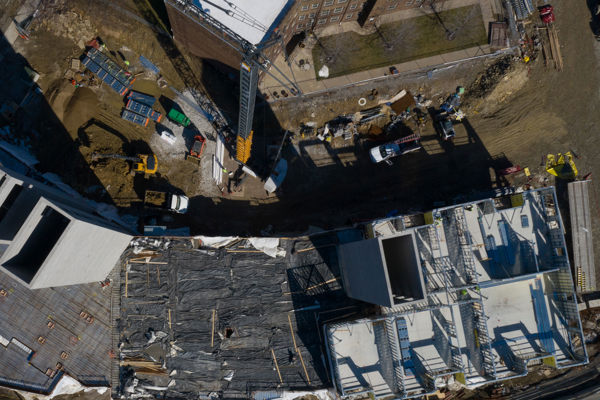
There’s an old Irish blessing: “May the road rise to meet you, may the wind be always at your back.” Sad to say, in commercial construction, the only winds blowing for the last 12 months have been headwinds.
Since the pandemic hit the U.S., our industry has experienced COVID-19-related shutdowns, layoffs, and increased construction costs. Even as we experience a third wave of the pandemic’s intensity, there is hope that the rollout of vaccines will mitigate adverse conditions by late Q3 2021, allowing for a return to a more “normal” operation.
Still, the question on every developer’s mind is...
“Will there be construction savings in 2021?”
Answering that question is difficult, primarily because the pandemic has clouded effective forecasting of material costs and availability. In reality, the virus has directly impacted three key drivers affecting construction costs in 2021: supply chain issues, material price increases, and backlog.
Supply chain issues related to raw materials continue to challenge the industry. Recent pandemic-related factory shutdowns in China crimped the supply chain, impacting material acquisition for some contractors. This issue, along with cost increases of up to 60% for imported materials from China (driven by recently implemented tariffs) has contributed to the difficulty of forecasting material costs for construction projects. “There is a lot more uncertainty surrounding construction activity, costs, and completion times,” affirmed Ken Simonson, chief economist for the Associated General Contractors of America(AGC).
The U.S. Chamber of Commerce Commercial Construction Index Q4 2020 indicated that 71% of contractors surveyed are experiencing at least one material shortage. Thirty-one percent cited lumber as being in short supply. Other material shortages mentioned include steel, electrical supplies, lighting supplies, and copper wire. Consequently, some prudent contractors are expanding their supplier network along with buying hedges on materials to mitigate upward price swings.
Material price increases are being led by the rapid rise in lumber prices. While a previous tariff on Canadian-imported lumber was reduced from 20% to 9%, increased demand from home builders could keep costs higher. Likewise, price increases for gypsum drywall are expected to continue throughout 2021. Prices on most materials have been rising since May 2020. The Associated Builders and Contractors (ABC) September 2020 tracking of material prices revealed that among 11 subcategories, eight of these materials experienced monthly increases.
A backlog of construction work, however, helps to rein in costs. The ABC Construction Backlog Indicator for September showed a decline of 0.5 months from August’s reading and 1.5 months lower than last year at this time. ABC’s Chief Economist Anirban Basu explained, “We are in the early stages of a nonresidential construction spending downturn. With a few exceptions, declines in the backlog have begun to accelerate across all markets and regions.”
A shrinking backlog can positively affect pricing overall, as it promotes increased competition among trade contractors. With uncertainty about future work, these contractors compete to secure whatever backlog work is available. This could help to hold or even drive costs down.
Other construction challenges expected to continue in 2021 include:
- a labor shortage
- pinch in profits due to falling construction costs
- less work
With all the challenges presented to the construction industry, there is a general feeling that the worst is behind us. It is an optimism reflected in the U.S. Chamber of Commerce Commercial Construction Index for Q4 2020, showing the backlog, revenue expectations, and contractor confidence higher than the previous two quarters, all encouraging signs that those headwinds are beginning to die down.